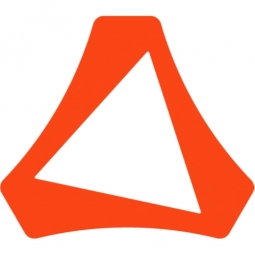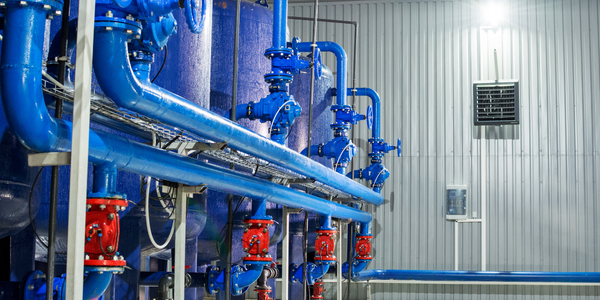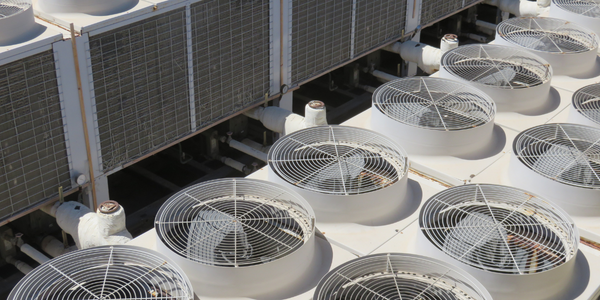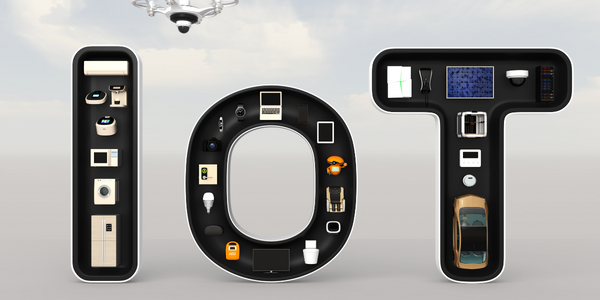Topology Optimization and New Manufacturing Methods for Lightweight Design in Agricultural Engineering

Technology Category
- Functional Applications - Manufacturing Execution Systems (MES)
Applicable Industries
- Construction & Infrastructure
- Equipment & Machinery
Applicable Functions
- Product Research & Development
- Quality Assurance
Use Cases
- Additive Manufacturing
- Manufacturing Process Simulation
Services
- Testing & Certification
About The Customer
Amazone is a company that develops and produces innovative agricultural technology with a high standard of quality, enabling and supporting modern and economical arable farming methods. They are committed to contributing to their customers’ success by leveraging advanced development tools, processes, and manufacturing methods. Their products are used under very harsh and extremely varying conditions, and they understand that in addition to service quality and the availability of spare parts, product longevity is a key purchase criterion for farmers. Therefore, when developing a new product, they not only have to be competitive regarding price, but they also have to consider the durability of the product, as this aspect impacts the manufacturer’s reputation in the marketplace.
The Challenge
Amazone, a producer of innovative agricultural technology, was faced with the challenge of redesigning a welded suspension component as a casting part, while improving its weight and durability properties. The component in question was a part of the trailed compact disc harrow, Catros-2TS, used for soil tillage. The original component was a complex welded part weighing 245 kg, with 16.5 m of weld seams needed to join the single parts. This made the production process time-consuming and costly. The challenge was not only to optimize the manufacturing process but also to increase the longevity of the component, as product longevity is a key purchase criterion for farmers. The equipment must be robust enough for harsh operating conditions, and design improvements must not lead to higher prices for the final product.
The Solution
Amazone employed a simulation-driven design process to eliminate unnecessary design iterations and reach a final design faster. They used Altair Engineering’s structural solver and optimization tool OptiStruct and solidThinking Inspire. The engineers first evaluated the weight savings and performance increase of the component if produced using a casting process. They conducted an upfront topology optimization and defined the possible design space and the boundary conditions, such as loads, required stiffness, and manufacturing restrictions. The software calculated how much material was needed and at which position it had to be placed in order to meet requirements such as structural strength. From the optimization result, the engineers created a detailed design which was then evaluated in a FE analysis with OptiStruct. The casted version realized a lower weight and smoother transitions of the structure, resulting in fewer stiffness variations. The overall loading in the casted material of the new design was significantly lower compared to the loadings in the weld seams of the original assembly.
Operational Impact
Quantitative Benefit

Case Study missing?
Start adding your own!
Register with your work email and create a new case study profile for your business.
Related Case Studies.

Case Study
Smart Water Filtration Systems
Before working with Ayla Networks, Ozner was already using cloud connectivity to identify and solve water-filtration system malfunctions as well as to monitor filter cartridges for replacements.But, in June 2015, Ozner executives talked with Ayla about how the company might further improve its water systems with IoT technology. They liked what they heard from Ayla, but the executives needed to be sure that Ayla’s Agile IoT Platform provided the security and reliability Ozner required.

Case Study
IoT enabled Fleet Management with MindSphere
In view of growing competition, Gämmerler had a strong need to remain competitive via process optimization, reliability and gentle handling of printed products, even at highest press speeds. In addition, a digitalization initiative also included developing a key differentiation via data-driven services offers.

Case Study
Predictive Maintenance for Industrial Chillers
For global leaders in the industrial chiller manufacturing, reliability of the entire production process is of the utmost importance. Chillers are refrigeration systems that produce ice water to provide cooling for a process or industrial application. One of those leaders sought a way to respond to asset performance issues, even before they occur. The intelligence to guarantee maximum reliability of cooling devices is embedded (pre-alarming). A pre-alarming phase means that the cooling device still works, but symptoms may appear, telling manufacturers that a failure is likely to occur in the near future. Chillers who are not internet connected at that moment, provide little insight in this pre-alarming phase.

Case Study
Premium Appliance Producer Innovates with Internet of Everything
Sub-Zero faced the largest product launch in the company’s history:It wanted to launch 60 new products as scheduled while simultaneously opening a new “greenfield” production facility, yet still adhering to stringent quality requirements and manage issues from new supply-chain partners. A the same time, it wanted to increase staff productivity time and collaboration while reducing travel and costs.

Case Study
Integration of PLC with IoT for Bosch Rexroth
The application arises from the need to monitor and anticipate the problems of one or more machines managed by a PLC. These problems, often resulting from the accumulation over time of small discrepancies, require, when they occur, ex post technical operations maintenance.

Case Study
IoT System for Tunnel Construction
The Zenitaka Corporation ('Zenitaka') has two major business areas: its architectural business focuses on structures such as government buildings, office buildings, and commercial facilities, while its civil engineering business is targeted at structures such as tunnels, bridges and dams. Within these areas, there presented two issues that have always persisted in regard to the construction of mountain tunnels. These issues are 'improving safety" and "reducing energy consumption". Mountain tunnels construction requires a massive amount of electricity. This is because there are many kinds of electrical equipment being used day and night, including construction machinery, construction lighting, and ventilating fan. Despite this, the amount of power consumption is generally not tightly managed. In many cases, the exact amount of power consumption is only ascertained when the bill from the power company becomes available. Sometimes, corporations install demand-monitoring equipment to help curb the maximum power demanded. However, even in these cases, the devices only allow the total volume of power consumption to be ascertained, or they may issue warnings to prevent the contracted volume of power from being exceeded. In order to tackle the issue of reducing power consumption, it was first necessary to obtain an accurate breakdown of how much power was being used in each particular area. In other words, we needed to be able to visualize the amount of power being consumed. Safety, was also not being managed very rigorously. Even now, tunnel construction sites often use a 'name label' system for managing entry into the work site. Specifically, red labels with white reverse sides that bear the workers' names on both sides are displayed at the tunnel work site entrance. The workers themselves then flip the name label to the appropriate side when entering or exiting from the work site to indicate whether or not they are working inside the tunnel at any given time. If a worker forgets to flip his or her name label when entering or exiting from the tunnel, management cannot be performed effectively. In order to tackle the challenges mentioned above, Zenitaka decided to build a system that could improve the safety of tunnel construction as well as reduce the amount of power consumed. In other words, this new system would facilitate a clear picture of which workers were working in each location at the mountain tunnel construction site, as well as which processes were being carried out at those respective locations at any given time. The system would maintain the safety of all workers while also carefully controlling the electrical equipment to reduce unnecessary power consumption. Having decided on the concept, our next concern was whether there existed any kind of robust hardware that would not break down at the construction work site, that could move freely in response to changes in the working environment, and that could accurately detect workers and vehicles using radio frequency identification (RFID). Given that this system would involve many components that were new to Zenitaka, we decided to enlist the cooperation of E.I.Sol Co., Ltd. ('E.I.Sol') as our joint development partner, as they had provided us with a highly practical proposal.






